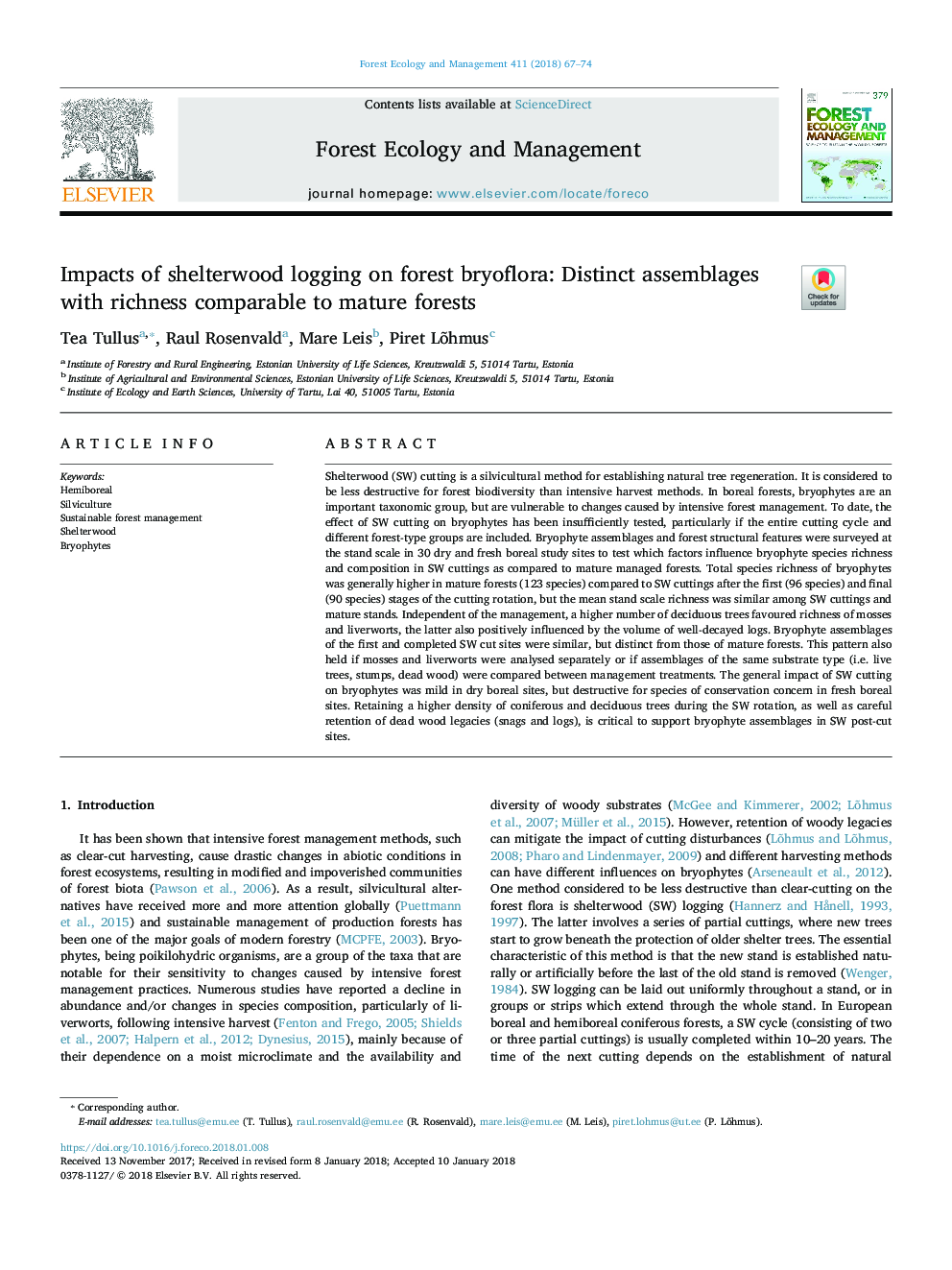| کد مقاله | کد نشریه | سال انتشار | مقاله انگلیسی | نسخه تمام متن |
|---|---|---|---|---|
| 6541819 | 1421347 | 2018 | 8 صفحه PDF | دانلود رایگان |
عنوان انگلیسی مقاله ISI
Impacts of shelterwood logging on forest bryoflora: Distinct assemblages with richness comparable to mature forests
ترجمه فارسی عنوان
اثرات ورودی پناهگاه به جنگل های بریوفلورا: مجموعه های متمایز با غنای قابل مقایسه با جنگل های بالغ
دانلود مقاله + سفارش ترجمه
دانلود مقاله ISI انگلیسی
رایگان برای ایرانیان
کلمات کلیدی
موضوعات مرتبط
علوم زیستی و بیوفناوری
علوم کشاورزی و بیولوژیک
بوم شناسی، تکامل، رفتار و سامانه شناسی
چکیده انگلیسی
Shelterwood (SW) cutting is a silvicultural method for establishing natural tree regeneration. It is considered to be less destructive for forest biodiversity than intensive harvest methods. In boreal forests, bryophytes are an important taxonomic group, but are vulnerable to changes caused by intensive forest management. To date, the effect of SW cutting on bryophytes has been insufficiently tested, particularly if the entire cutting cycle and different forest-type groups are included. Bryophyte assemblages and forest structural features were surveyed at the stand scale in 30 dry and fresh boreal study sites to test which factors influence bryophyte species richness and composition in SW cuttings as compared to mature managed forests. Total species richness of bryophytes was generally higher in mature forests (123 species) compared to SW cuttings after the first (96 species) and final (90 species) stages of the cutting rotation, but the mean stand scale richness was similar among SW cuttings and mature stands. Independent of the management, a higher number of deciduous trees favoured richness of mosses and liverworts, the latter also positively influenced by the volume of well-decayed logs. Bryophyte assemblages of the first and completed SW cut sites were similar, but distinct from those of mature forests. This pattern also held if mosses and liverworts were analysed separately or if assemblages of the same substrate type (i.e. live trees, stumps, dead wood) were compared between management treatments. The general impact of SW cutting on bryophytes was mild in dry boreal sites, but destructive for species of conservation concern in fresh boreal sites. Retaining a higher density of coniferous and deciduous trees during the SW rotation, as well as careful retention of dead wood legacies (snags and logs), is critical to support bryophyte assemblages in SW post-cut sites.
ناشر
Database: Elsevier - ScienceDirect (ساینس دایرکت)
Journal: Forest Ecology and Management - Volume 411, 1 March 2018, Pages 67-74
Journal: Forest Ecology and Management - Volume 411, 1 March 2018, Pages 67-74
نویسندگان
Tea Tullus, Raul Rosenvald, Mare Leis, Piret Lõhmus,
